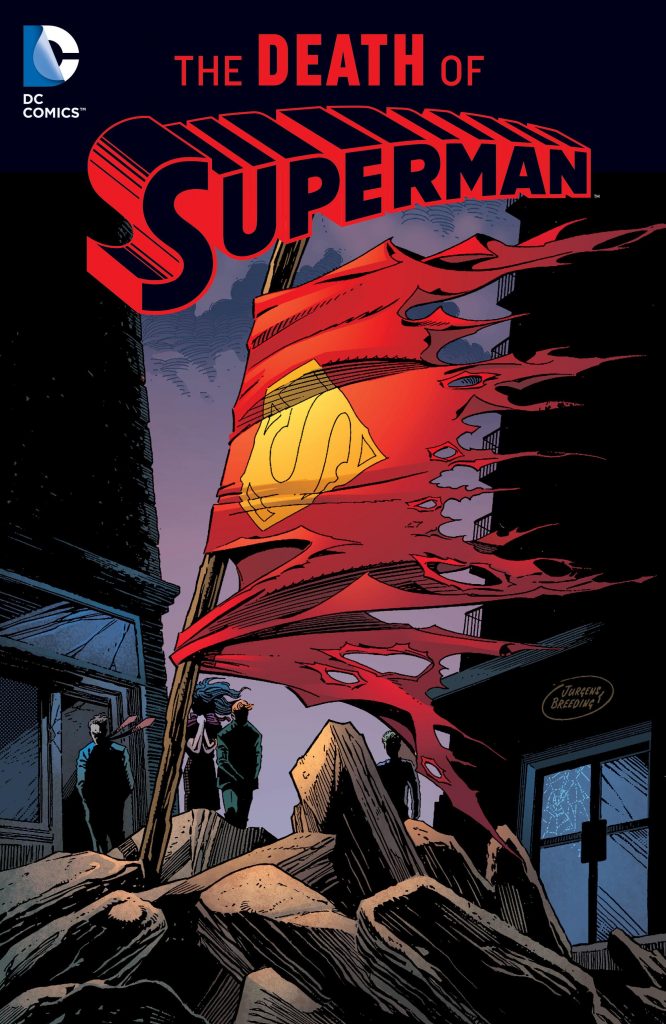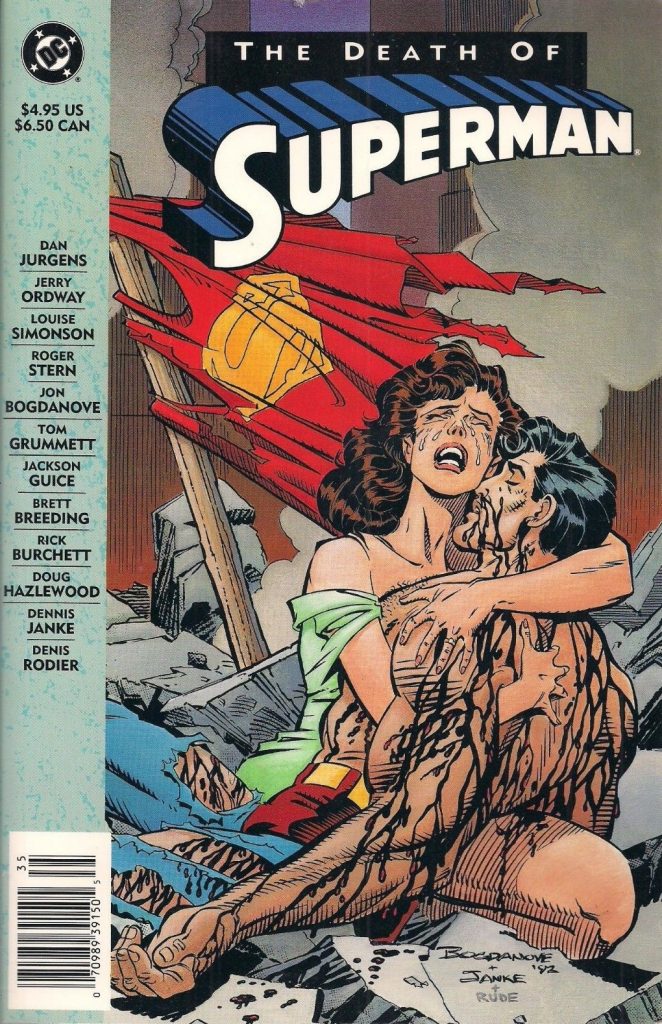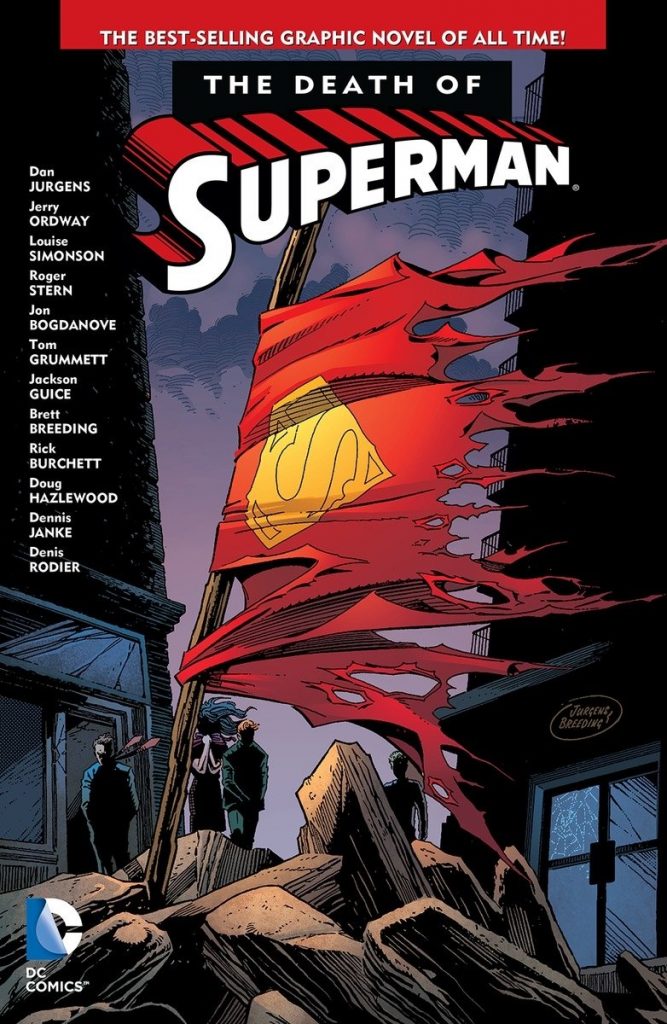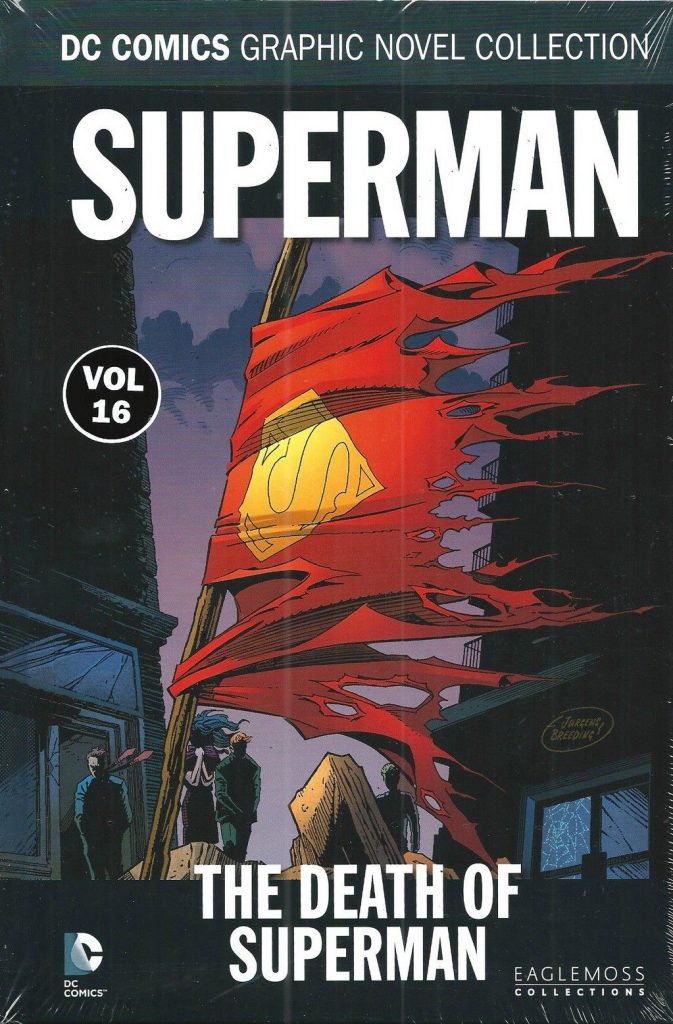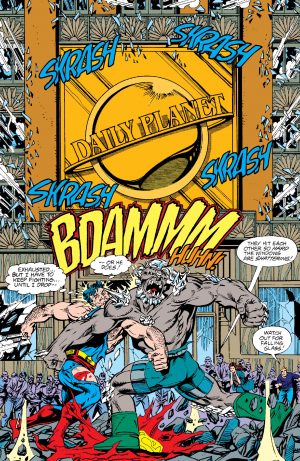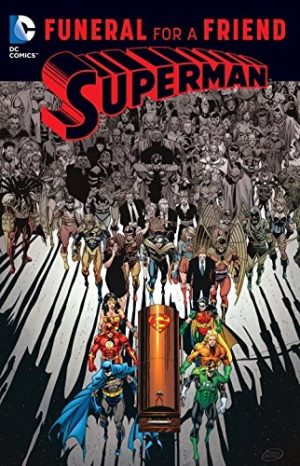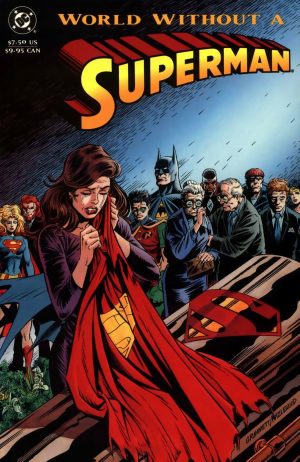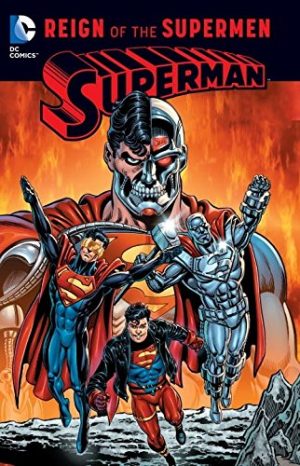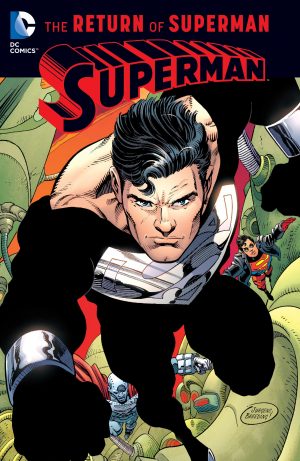Review by Frank Plowright
In 1992 Superman’s supposed death picked up media attention like no comic before or since. It does as the title says, but while comic fans were used to the idea of ‘death’ as a method of short term sales spike, outside that relatively small pond the idea was taken seriously and remains a marketing benchmark of how to generate mainstream media promotion.
So how do you kill the superhero who’s pretty well invulnerable on Earth? DC’s chosen method was to have him face Doomsday, a brutal giant-sized alien, every bit Superman’s match for strength. An effective opening sequence (owing more than a little to Walt Simonson’s earlier Thor) sees Doomsday escaping confinement, but the opening chapter is otherwise largely unrelated to the main story, the only one where that’s the case.
At the time of publication Superman occupied four monthly comics in addition to appearing with the Justice League, and while there was a unified editorial direction, individual creative teams had different supporting casts and different approaches. This makes The Death of Superman a very piecemeal read, and there’s a lack of artistic consistency. Jon Bogdanove’s Clark Kent is very much Superman with glasses, bulky and confident, with other figures sometimes strange, Rick Burchett has little finesse at this stage of his career, and Butch Guice, then calling himself Jackson, is a step up, without approaching the artist he’d become. Tom Grummett has been remarkably consistent over the years, but it’s Dan Jurgens whose art stands the test of time, clear superheroic action within interesting layouts. Jurgens is also responsible for much of the writing, and the entirety of the sequence where Superman actually dies. This is a bold experiment, a brutal, last-ditch battle told in full page illustrations. By this time Superman has already faced Doomsday on several occasions, is well aware of his power, and realises that stopping him might entail the ultimate sacrifice.
If only the remainder lived up to that episode. There’s a need for the preliminary encounters to establish Doomsday as a match for Superman, and some aspects are good, such as Doomsday’s silence contrasting the usual super-villain boasting, but for the most part it’s ordinary and repetitive material. Doomsday lands in the remote countryside, then for never revealed reasons begins heading toward Metropolis, where after 150 pages the climactic battle occurs. Within the parameters, Louise Simonson is the writer displaying the most in the way of individual touches (Lois Lane kicking Superman’s butt for one), and some characters are now obscurities lost in time (Bloodwynd? A long red-haired Lex Luthor? Maxima?)
The book concludes with a faked news magazine, Newstime, which although indulgent and seemingly filled with in-jokes, is also innovative and interesting, with the adverts often raising a smile. In the manner of Time and Newsweek, the issues of the day are digested and discussed, with Superman’s death being an inordinately big story. Also interesting is the chronological editorial brief regarding the content required for individual issues, some of which feed into the following Funeral For a Friend, World Without a Superman or if you’d prefer the earlier edition.
Deliberately bombastic with emotional content largely formulaic, this isn’t a story that’s aged well. There’s zero subtlety about it, and because much of the art is ordinary it looks like a period piece. The Death of Superman stands as a marketing landmark, but very little beyond. This is also collected in The Death and Return of Superman Omnibus.
